Greece › Meteora › Best Things to Do
By Santorini Dave
See Also
• Best Meteora Hotels
• Best Meteora Restaurants
• Visiting the Meteora from Athens
• Mainland Greece Travel Guide
• Athens Travel Guide
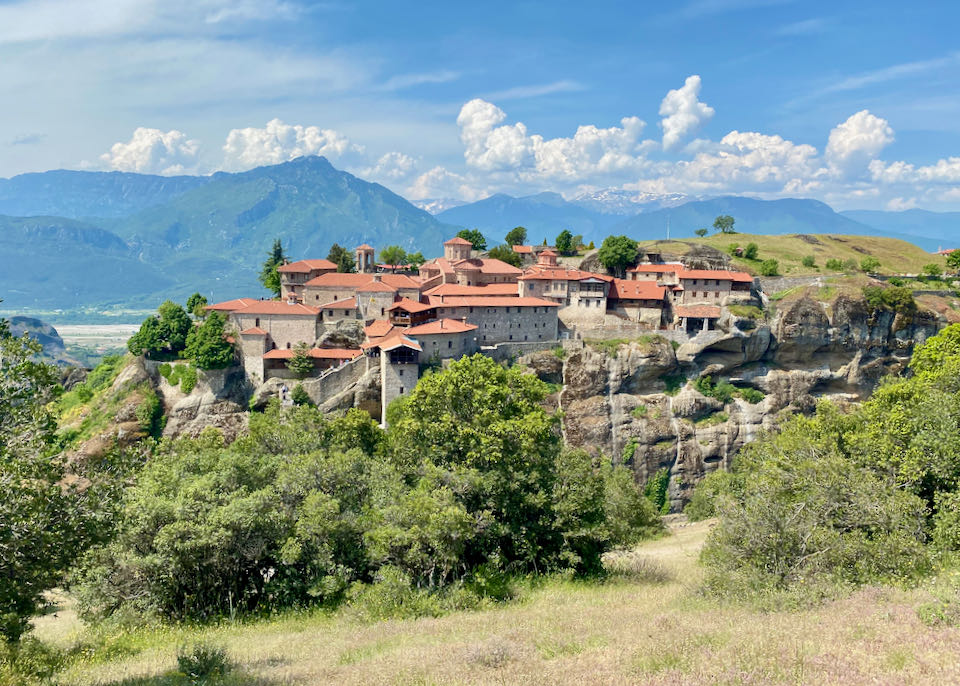
The Great Meteoron Monastery.
Meteora Tips & Recommendations
- There are two main areas to stay in when visiting the Meteora: the town of Kalambaka and the village of Kastraki. Basically, Kastraki offers more charm and Kalambaka has more commerce and is the transit hub; both have plenty of great hotels and restaurants and daily bus service to the monasteries. It takes only 15 minutes to walk (or a very short bus/taxi ride) between the two, making it easy to stay in one location and visit the other.
- Most train routes to/from Kalambaka involve a transfer at Paleofarsalos, where travelers can change trains for Thessaloniki or Athens. There is one daily direct route that travels between Kalambaka and Athens, taking just under 5 hours.
- Kalambaka’s small, street-corner bus station is a subsidiary to the larger and modern Trikala bus terminal, 23 km away. Most ongoing services will involve a change of bus at Trikala, which is well-linked to the most important mainland destinations. It takes about 6 hours to get from Athens to Kalambaka by bus (including the bus change in Trikala).
- Best Hotels near the Meteora: Hotel Doupiani House (Kastraki), Divani Meteora (Kalambaka)
- Best Restaurants near the Meteora: Meteoron Panorama (Kalambaka) • Valia Calda (Kalambaka) • Qastiro (Kastraki) • Taverna Gardenia (Kastraki)
- Booking.com is the best website for searching and booking hotels near the Meteora.
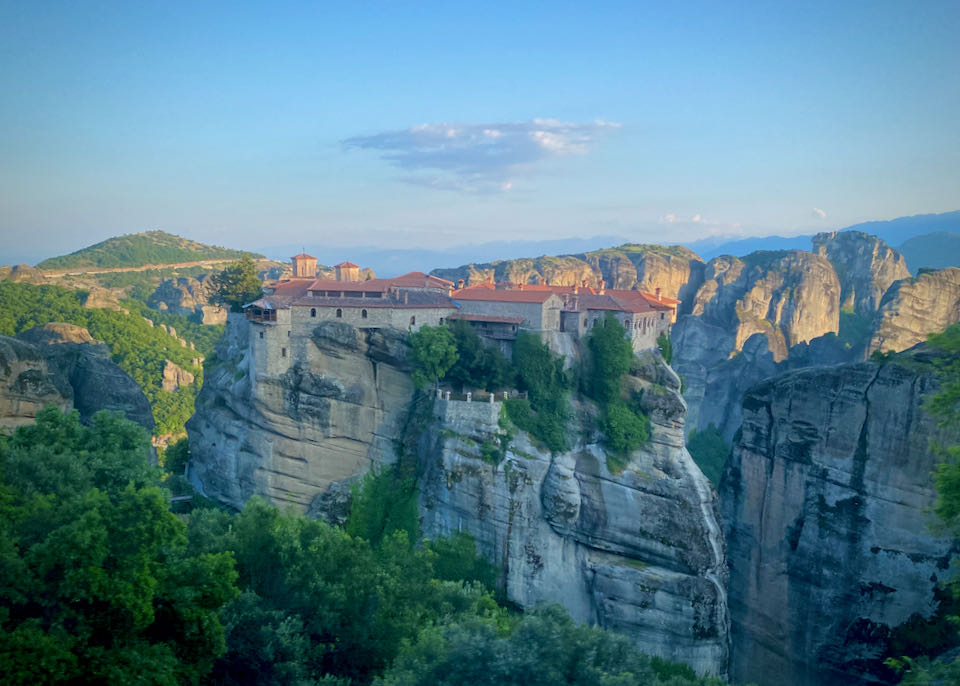
The Monastery of Varlaam at sunset.
Visiting the Meteora Monasteries
Though the towering limestone pillars of the Meteora landscape are stunning in themselves, the main draw for travelers to the area is the collection of jaw-dropping, centuries-old monasteries that top them. At the height of the ascetic period there were over two dozen monasteries in the region, created and inhabited by monks seeking a life of prayerful isolation; these days only six house organized monastic communities and are open to visitors: St. Nicholas Anapafasas (Agios Nikalaos), Rousanou (Agia Varvara), Varlaam, the Great Meteoron (Megalo Meteoron), Holy Trinity (Agia Triada), and Saint Stephen (Agios Stefanos). Two of the six, The Monastery of Saint Stephen and Rousanou, are modern-day convents.
All monasteries close at least one day per week, enact a strict dress code, and charge a nominal fee of 3€ to enter. The largest and most visited monasteries are the aptly-named Great Meteoron Monastery and the Monastery of Varlaam. Holy Trinity monastery gained fame as the setting for the James Bond Film, For Your Eyes Only.
Monastery Opening Hours
- St. Nicholas Anapafasas: 9am to 5pm summer, closed Fridays. 9am to 5pm winter, Sundays 9:30am to 4pm.
- Rousanou: 10am to 4pm summer. 9am to 2 pm winter. Closed Wednesdays year-round.
- Varlaam: 9am to 3pm summer, closed Tuesdays. 9am to 2pm winter, closed Tuesdays, Wednesdays, Thursdays.
- Great Meteoron: 9am to 3pm summer, closed Tuesdays. 9am to 2pm winter, closed Tuesdays, Wednesdays, Thursdays.
- Holy Trinity: 9am to 5pm summer, 10am to 4pm winter. Closed Thursdays year-round.
- Saint Stephen: 9:30am to 1:30pm & 3:30pm to 5:30pm summer. 9:30am to 1pm & 3pm to 5pm winter. Closed Mondays year-round.
Monastery Admission Fee: 3€/person at each monastery
Beautiful herb gardens at the Monastery of St. Stephen.
Meteora Monastery Dress Code
A strict dress code is enforced inside the monasteries. In order to be allowed in, and throughout their visit, women must wear skirts or dresses hitting below the knee, and men must wear long pants or below-the-knee shorts. For both women and men, sleeveless clothing is prohibited. For visitors who forget or are unaware of the requirements, there are simple skirts and shawls available to borrow or buy as you pay admission at monastery entrances.
Meteora Monasteries with Limited Mobility
Not long ago, the only way in and out of the Meteora monasteries was either by rope ladder or being hoisted in a net or box via a pulley system from above. (When the monks were asked how often the ropes were replaced, their notorious reply was “When the Lord lets them break.”) Stairs and bridges were added in the 1920s, allowing much easier – and safer – access for visitors. Even so, travelers with mobility issues will find it difficult to visit the monasteries, as reaching the entrance to most of them involves scaling hundreds of stairs. The most accessible of the lot is the Monastery of Saint Stephen, which requires no steps to enter and has ramps between most levels within the property (steps are required to visit the restroom). The Monastery of Saint Nicholas Anapafsas has only 100 steps to enter, but the monastery is built up in multiple higher levels from there. There is no elevator access at any of the Meteora Monasteries.
Saint Stephen: 0 steps
St. Nicholas Anapafasas: 100 steps
Varlaam: 120 steps
Holy Trinity: 150 steps
Rousanou: 210 steps
Great Meteoron: 300 stepsMeteora Tours
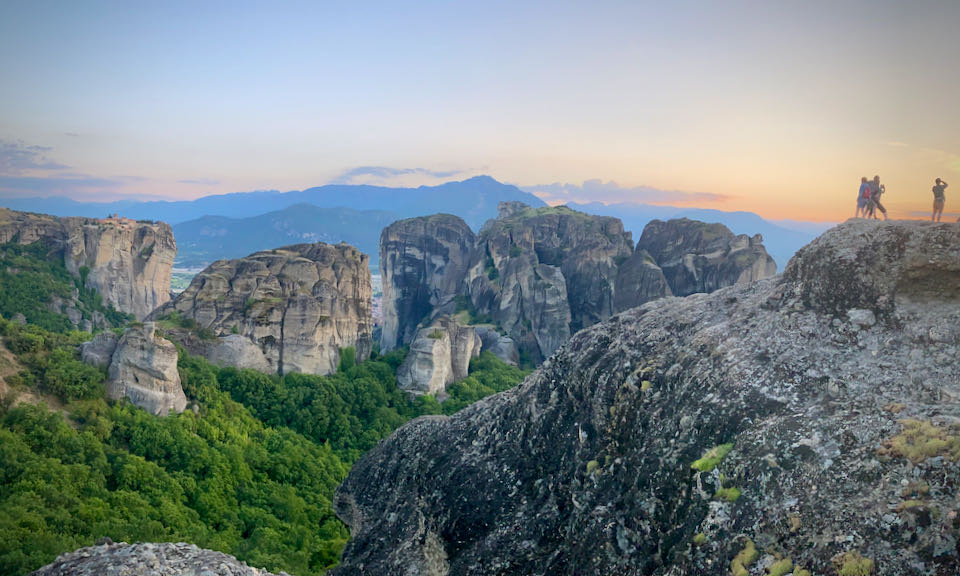
The Meteora Sunset Tour offers a great opportunity for taking photos without crowds.
The Meteora Monasteries can be visited on your own, or as part of an organized tour. We recommend taking at least one tour on your visit in order to gain a fuller understanding of the history of the monasteries and the surrounding region. Tours are not offered by the monasteries themselves; there are a few local companies offering excellent tours out of Kalambaka/Kastraki, as well as organized day trips from Athens and Thessaloniki. If you’re staying in the area and reasonably fit, a great combination is to take both an evening sunset tour and a day hike.
The Best Meteora Tours
- Meteora Morning Sightseeing Tour: Sees all 6 monasteries, and visits 3. 4 hours.
- Meteora Evening Sunset Tour: Sees all 6 monasteries and visits 1, plus a historic Byzantine church. Amazing photo opportunity. 4 hours.
- Meteora Hiking Tour: Beautiful hike through the rocks and forest, visits 1 monastery. The only way to see the Monastery of Ypapanti, which cannot be reached by car. 5 hours.
- Monastery Tour from the Kalambaka Train Station: Picks up from the Kalambaka train station in the and sees all 6 monasteries and visits 3 before returning to the train station in late afternoon. 4.5 hours.
- Meteora Private Full-Day Tour: Personalized tour visits all 6 monasteries, visits 2 or 3. 6 hours.
- Meteora Cliff Scramble Experience: Hike/scramble along secret paths up one of the tallest Meteora rocks to amazing views at the top. 3 hours.
- Meteora Truffle Hunting Excursion: The Meteora Natural History and Mushroom Museum offers this unique opportunity, which also includes past and wine tasting and a museum visit. 3 hours.
- Meteora Train Tour from Athens: Visits 3 monasteries, plus hidden hermit caves with pre-booked train travel from Athens and train station pick-up in Kalambaka. (Also available from Thessaloniki.) 14 hours.
The abandoned monastery of Ypapanti is not accessible by vehicle. It can only be seen on a hiking tour, or by hiking on your own.
Seeing the Monasteries On Your Own
By Car: Having a car in the Meteora can be both a benefit and a liability. Due to narrow roads and limited parking space, expect some traffic jams and difficulties finding parking during high tourist season (May to late October) outside of the most-visited monasteries of Great Meteoron, Varlaam, and Agios Stefanos, especially between 10am and 2 pm. Arrive at these monasteries before opening hour, if possible.
Take advantage of the freedom that having a car brings and drive up to the Monasteries about an hour before sunset, after most monasteries have closed. Many excellent view points will be peaceful, quiet, and all but deserted – and excellent for photos.
By Bus: Local buses run three times per day between Kalambaka, Kastraki, and all 6 Meteora Monasteries. A single ticket is 1.80€, a full-day ticket is 5.50€; tickets are issued on the bus or at the Kalambaka bus station.
Stops are as follows:
• Kalambaka Bus Station
• Hotel Divani
• Town Hall Square (at the waterfall in front of Panellino restaurant)
• Camping Vrachos
• Kastraki Main Square
• Camping The Cave
• St. Nicholas Anapafsas
• Rousanou
• Varlaam
• Great Meteoron
• Holy Trinity
• St. StephenBuses depart from the Kalambaka bus station at 9am, noon, and 2:30pm; returning buses depart from St. Stephen monastery at 11am, 2pm, and 4:30pm.
On Foot:
There are many hiking trails to and around the monasteries that can be accessed on your own or as part of a guided tour (recommended, unless you’re a strong hiker who is experienced in navigation). The best hotels in the Meteora that are close to hiking trails are Guesthouse Vavitsas in Kastraki and Guesthouse Mythos in Kalambaka.The best times of year to walk the Meteora hiking trails are spring and fall. Rocks can become wet and slippery in winter months, and trails can be extremely hot in summer; hike in morning hours or late afternoon/early evening hours and take plenty of water with you. The Meteora Trails and Kalambaka Tourist Center websites offer a good collection of interactive hiking maps that include information on trail length, elevation gain, and access to water along the route.
Monastery of the Holy Trinity.
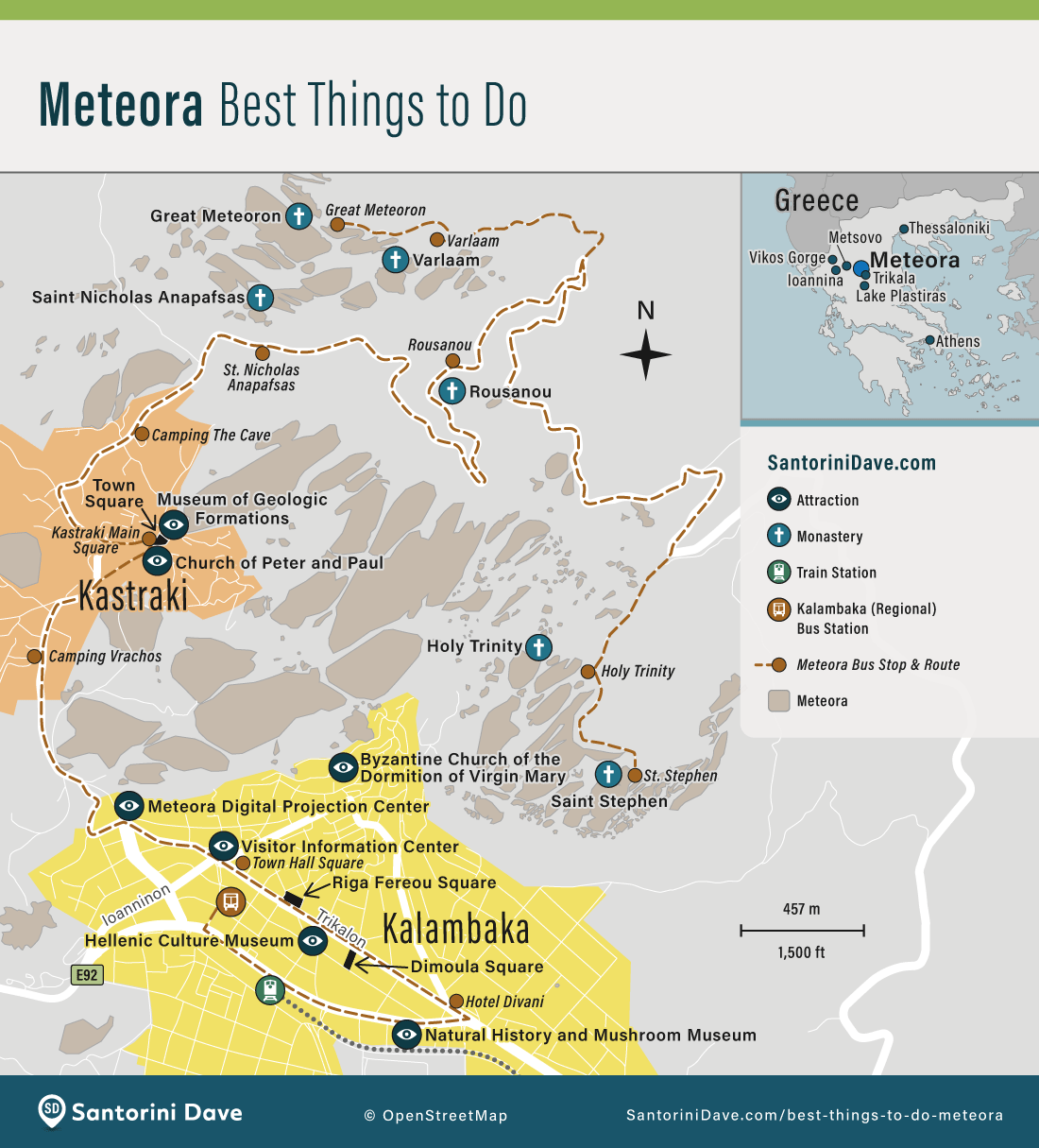
More Things to Do in the Meteora
Church of the Dormition of the Virgin Mary – Kalambaka
Built around the 4th and 5th centuries, this Byzantine church is one of the oldest and most historic buildings in the area. It is famous not only for its age, but also for its many different architectural features that represent 17 centuries’ worth of restorations over multiple historical periods. Today, it is the only church in the world that features an early Christian pulpit in the center of its nave.
• Open daily 8:30am to 1pm and 3pm to 8pm. 2€/person.Geological Formation Museum of Meteora – Kastraki
An approachable, informative, and well-thought-out museum that explains the history and formation of the Meteora’s magnificent geological structure. Centrally located on Kastraki’s main square, the museum is housed within a historic building that was once the town’s primary school. The entire museum can be visited in under an hour, an easy stop that will enhance your understanding of the surrounding region.
• Open 8am to 3pm Monday to Friday, 9am to 4pm weekends. Free. +30 2432 025223Natural History Museum of Meteora & Mushroom Museum – Kalambaka
This is a great little modern museum displaying a wide collection (around 350 species) of stuffed birds and mammals found in the surrounding region, as well as around 250 species of local mushroom species. Over the museum’s two levels, animals are realistically displayed within their natural habitats and visitors get a unique opportunity to learn about the regional history, habits, and customs related to mushrooms – which also feature prominently in the gift shop. The museum also hosts seasonal truffle-hunting excursions of the surrounding region. Great for families with young children.
• Open 10am to 6pm daily. 5€ adult, 4€ child. +30 2432 024959Hellenic Culture Museum/Greek Education Museum – Kalambaka
Cozy museum dedicated to the history of Greek education and written tradition. Exhibitions concentrate on the evolution of Greek schooling and toys over time, ancient Greek writers, and Aesop’s Fables. There’s one room set up like an old classroom, another devoted to the history of the Meteora, and even a display of the first book ever to be printed in Greek, the Grammar of Konstantinos Laskaris of Byzantium. Excellent tours are provided by friendly and helpful staff who are great with kids.
• Open 11:30am to 7pm Monday to Saturday. Closed Sundays. 5€ adult, 4€ child. +30 2432 075219Digital Projection Centre of Meteora’s History and Culture – Kalambaka
This movie theater located on the west edge of Kalambaka shows an interesting 3D movie about the history and formation of the Meteora multiple times per day. Screenings are every hour from 10am to 3pm and shown in Greek or English. The building is air-conditioned and the entirety of the movie (composed of 4 separate sections) is only 40 minutes long, making it an easy stop if you’ve got a busy schedule.
• Open daily 9am to 4pm. Free. +30 24320 77997Day Trips from the Meteora
Ali Pasha fort in Ioannina, Greece.
- Trikala: Mid-sized town with a picturesque river running through, free bike rental, a handful of good museums, and nice café scene. 20 km from Kalambaka.
- Metsovo: Picturesque traditional mountain village known for hand-woven wool textiles, museums, and excellent winery. 60 km from Kalambaka.
- Lake Plastiras: Large man-made lake surrounded by lush forest with many outdoor and water activities like horseback riding, archery, canoeing, and water-biking. 63 km from Kalambaka.
- Ioannina: The capital city of the Epirus region, spread around a lovely lake and known for its Ottoman fortress ruins, history of silversmithing, and the cool Perama Cave – one of the largest in Greece. 105 km from Kalambaka.
- Vikos Gorge: Gorgeous 30km mountain gorge home to many unique species of flora and fauna, hiking the entirety takes about 7 hours. 135 km from Kalambaka.
Read More
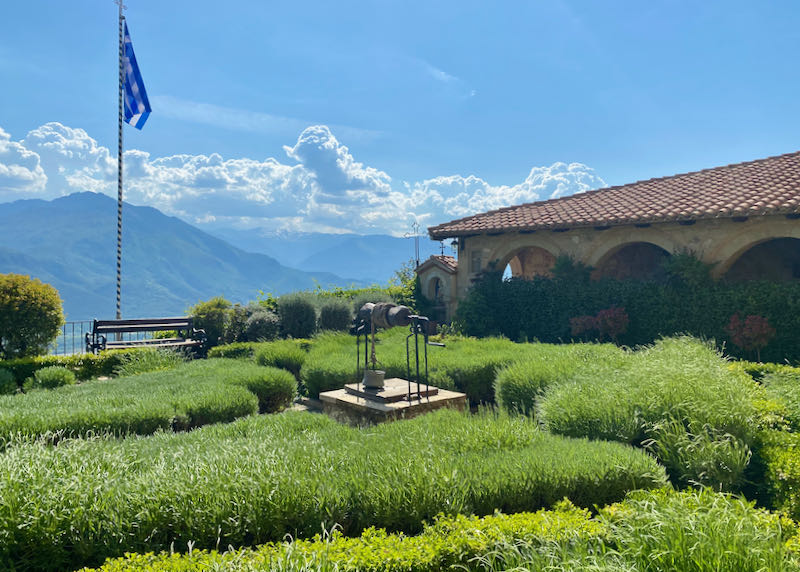
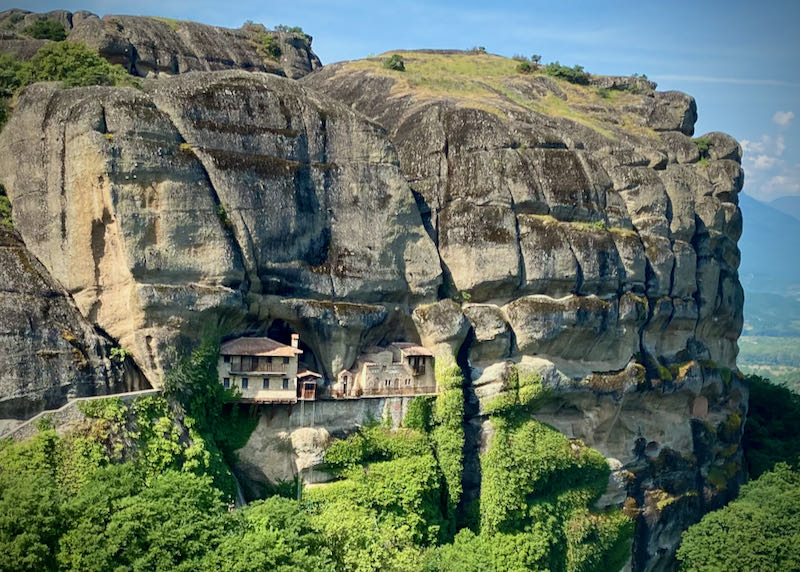
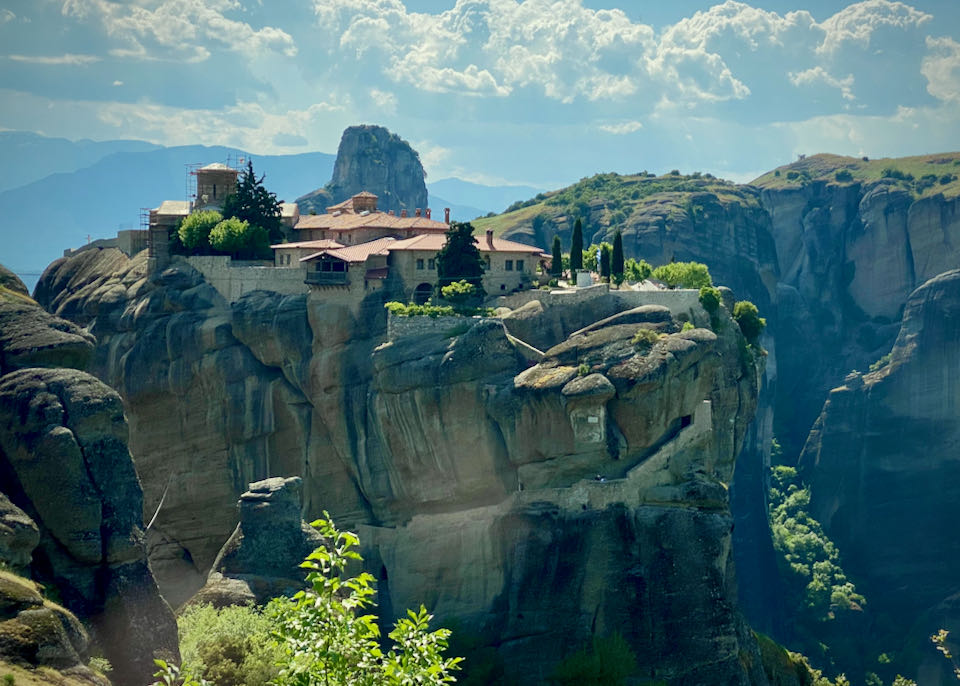
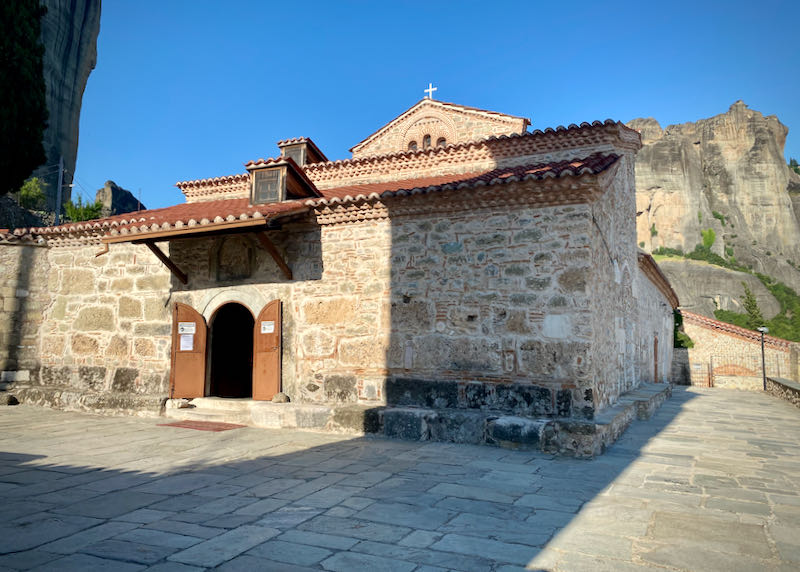
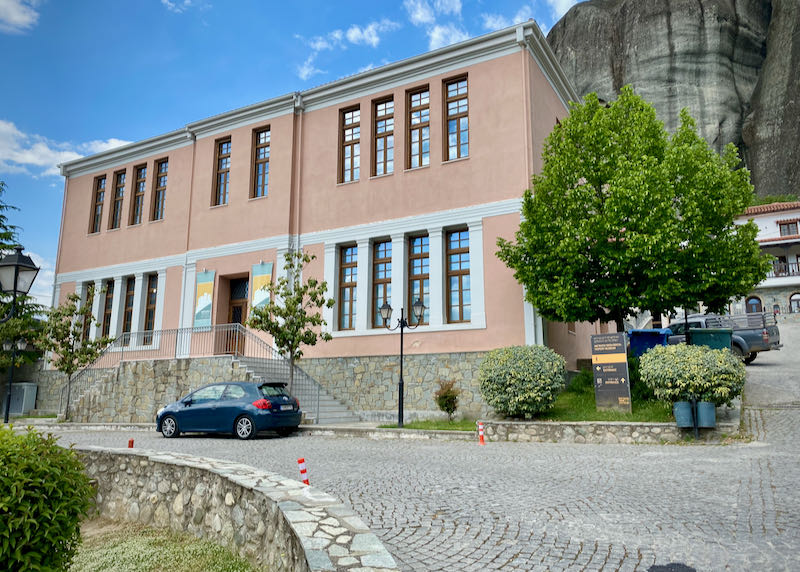
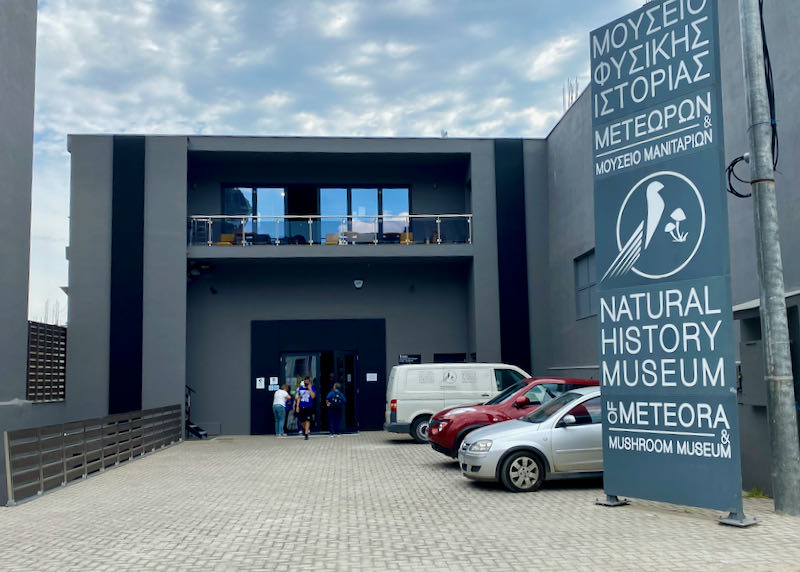
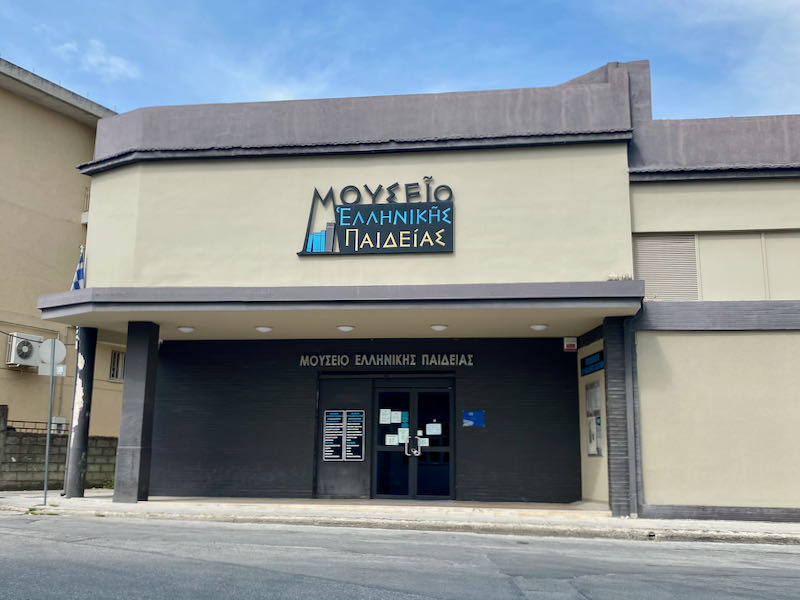
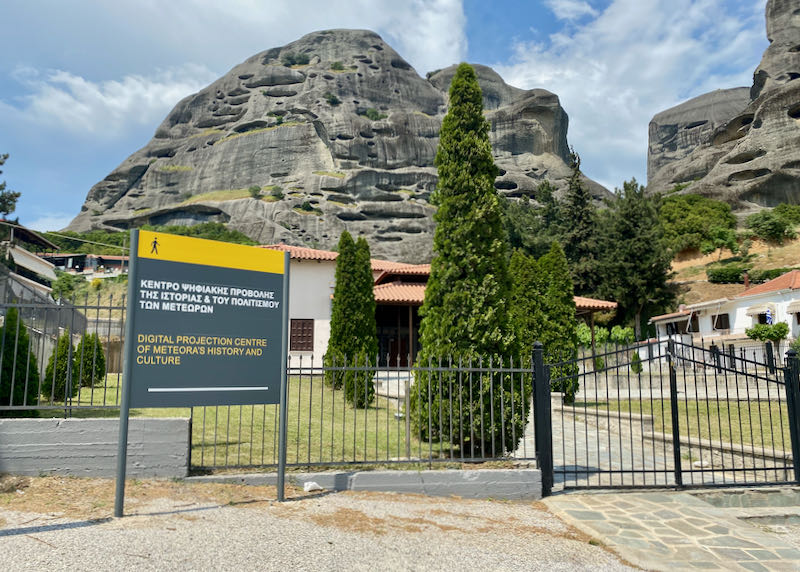
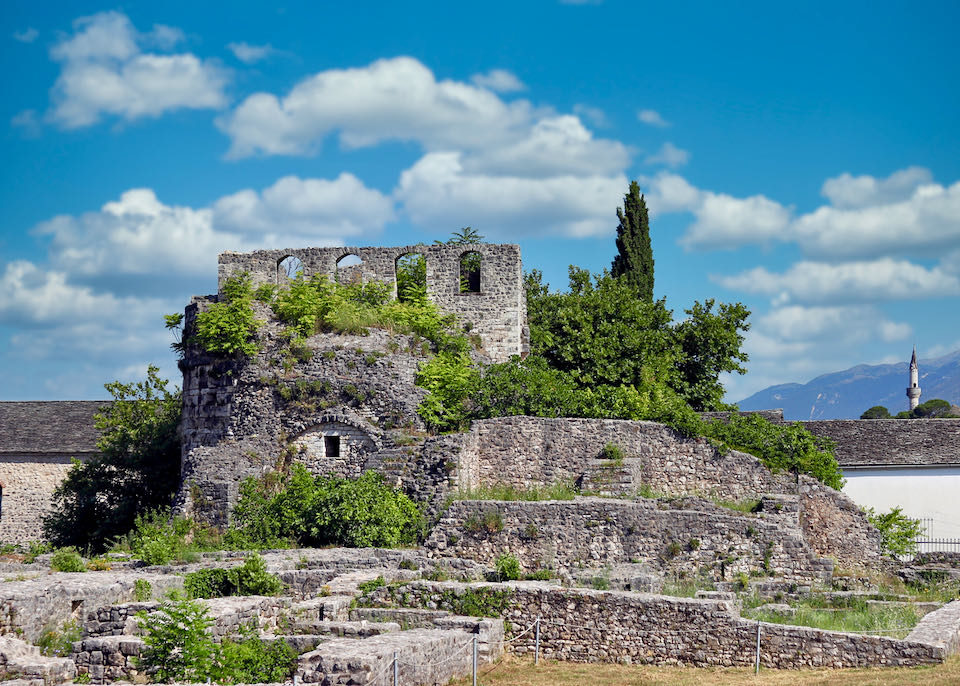
About Santorini Dave